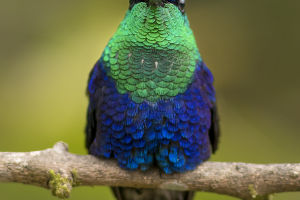The Tibetan antelope weighs 13-16 kg and has a strong body, thin legs, narrow hooves, and agile movements. It has a broad forehead, large eyes, short ears, short tails, fine horns in males, and no horns in females. The head length is 160-185 mm.
The Tibetan antelope is a typical alpine desert animal that grows in alpine grasslands, subalpine grassland meadows, and alpine desert areas at an altitude of 300-5750 meters. Water-filled river valleys, mild mountains, and small undulating terraces can be seen in their activity area.
They especially like herbaceous plants that grow with abundant water but are not too stubborn and often wander. In summer, Tibetan antelopes gather into larger herds and migrate to higher ground.
Tibetan antelopes live in desert, highland grassland, and plateau steppe environments at altitudes of 4600-6000 meters. Besides their thick skin to keep out the cold, what other survival skills do they have in the harsh and changing climatic conditions?
The lack of oxygen in the highlands is by far the most important survival problem. According to a report by Xinhua News Agency, researchers found that the heart of the Tibetan antelope is very large, more than 3% of its body weight, and its blood contains a large number of red blood cells, which carry a large amount of oxygen.
Despite their clumsy, large noses and wide nostrils, their noses are actually their "secret weapon" for survival on the plateau. The nasal cavity has a small sac, which is an important structure that helps them breathe.
Tibetan antelopes have a large heart, a large number of red blood cells, and a small pouch in their nostrils that allows them to run freely on the plateau. No matter how fast you run, don't get angry. Tibetan antelopes can run at an altitude of 70-80 kilometers per hour at an altitude of 5000 meters. Under long natural selection and hard plateau environments, antelopes and other species with excellent genetic characteristics have been born.
Tibetan antelopes mostly appear in the early morning or at dusk, and mainly eat grass from the family Gramineae and Salicaceae, such as mosses, needlegrass, and lichens. However, there are few plants in the mountains and deserts, and in some places, there is still half a year of snow.
Tibetan antelopes are not picky eaters, but in spring, when food is scarce in winter, they must spend long hours foraging for food, even during their lunch break. Tibetan antelopes are alert by nature and do not let down their guard even when resting. They like to rest in a low-lying area near a lake or dig a shallow hole in the ground. In digging and hiding, they can avoid the wind and sand and find the enemy in time.
The natural enemies of the three-horned antelope are wolves and brown bears. Researchers have also found traces of antelope scat in wolf and brown bear scat. In addition, bobcats and snow leopards have been found to prey on Tibetan antelope.
The researchers observed that the Tibetan antelope flees when it hears the sound of wind and sand. With its long, strong limbs and flat feet, it is not only a fast runner, but also graceful in shape. Tibetan antelopes live in groups for warmth and to avoid predators.
They carry out daily activities in groups or in groups of 10. In the face of danger, they do not panic and escape in an orderly formation. But when wolves attack at close range, antelopes do not rush forward. They huddle together, keep their heads down, and use their long horns to deal with wolves.
The mass migration of Tibetan antelopes usually lasts for a month until they return to their wintering grounds. The movements of Tibetan antelopes are very complex. Some Tibetan antelopes can live in one place for a long time, while others have a habit of migrating.
Tibetan antelope females have different patterns of movement. Each winter, adult female antelopes mate with their female offspring and travel for 300 km until lambing in the summer. The smaller males leave the group and join other young or adult males, eventually forming a mixed group.
The Tibetan antelope, known as the soul of the plateau, was recently reported in the media to have been removed from the endangered list as countries around the world increase their environmental efforts.


